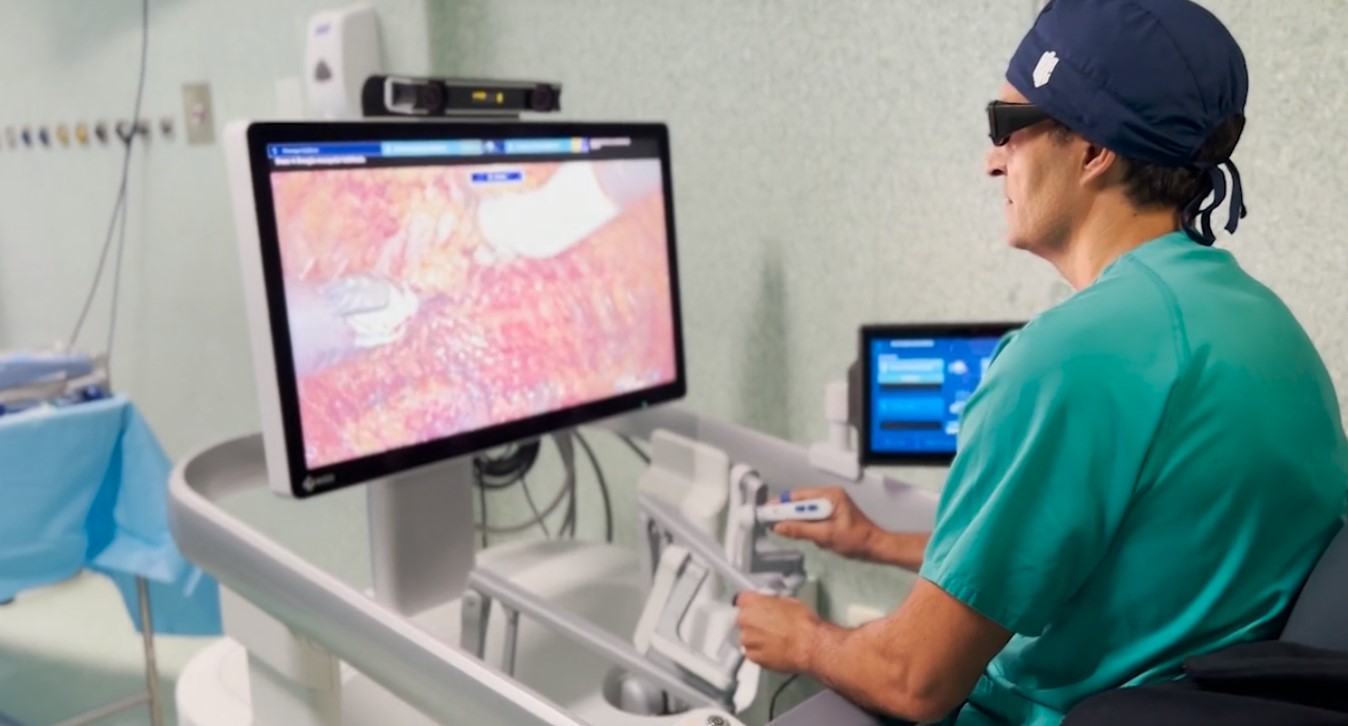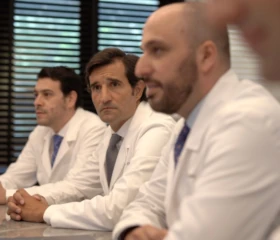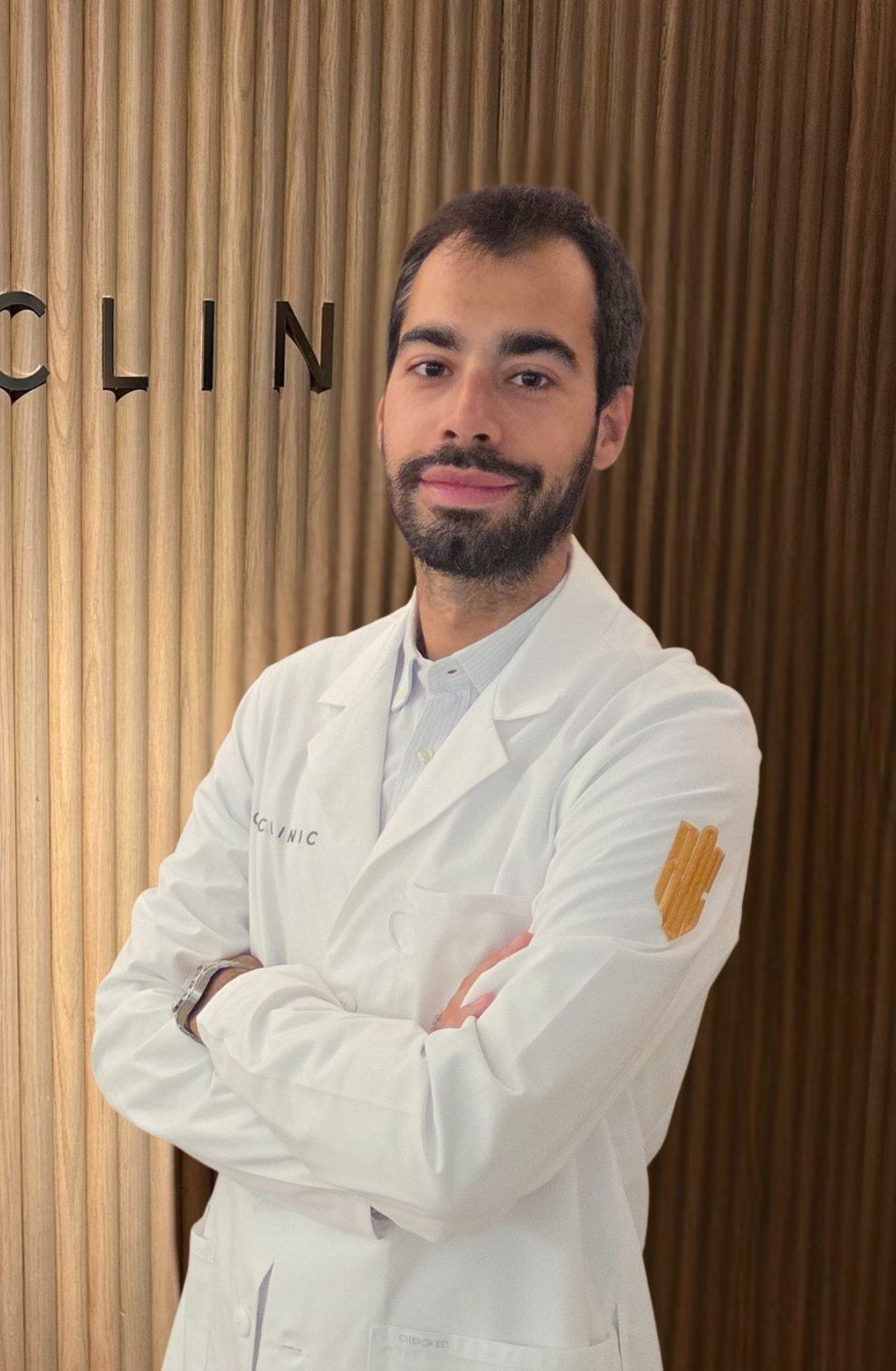Hugo Robot
The modular design of the Hugo robot with several quadrants allows the different arms to be used independently as well as to adapt to the operating room space and the needs of each procedure.


What is the Robot Hugo?
Medtronic's Hugo RAS robot combines wrist instruments, 3D visualization and cloud-based surgical video recording to safely record procedures and collect data for analysis and improvement of surgical technique. In addition, the surgeon's console is open, streamlining team communication and maximizing comfort.
In Urology, the Hugo RAS robotic system can perform surgeries to treat the following oncological and functional pathologies:
- Prostate cancer, where the safety and precision of the robot avoid side effects such as urinary incontinence or erectile dysfunction. Hugo allows the total removal of the tumor while preserving functional results.
- Bladder cancer requiring removal of the organ and reconstruction of the urinary tract by means of a new bladder or, when this is not possible, a conduit to drain urine from the kidneys.
- Kidney cancer requiring total or partial removal of the organ.
- Excision of abdominal lymph nodes in patients who require it as a result of testicular tumors or other tumors of the retroperitoneum.
- Urethral stricture.
- Correct functional pathologies such as dilatation of the renal pelvis and consequent deterioration of renal function, or bladder prolapse through the vagina.
- Minimally invasive.
- Less bleeding.
- Lower risk of complications in the operation.
- Greater surgical precision.
- Better functional results.
- Reduction of hospital stay.
- Better and faster recovery.
- Faster return to daily activities.
Since the robotic surgery robotic surgery system (RAS) Hugo from Medtronic received CE marking (Conformité Européenne) in October 2021 for urological and gynecological procedures, at ROC Clinic we are committed to this technology by incorporating it into our surgical arsenal.
This acquisition positions us as pioneers in robotic surgery nationally and internationally, allowing us to have greater versatility and versatility when designing customized treatments for our patients.
Although robotic surgery offers patients the benefits of minimally invasive surgery, only about 3% of surgeries worldwide are performed robotically. Our team has undergone the necessary training programs to become accredited in the use of Hugo for surgeries that require it.
+1
pioneer center in acquiring the Hugo RAS robot in Spain.
Accredited in the use of Hugo for minimally invasive surgeries.
Pioneers in robotic surgery at national and international level.
Newsof ROC Clinic in Robot Hugo
Research
Da Vinci and Hugo RAS Platforms for robot-assisted partial nephrectomy: a preliminary prospective comparative analysis of the outcomes.
They ask us in the Consultation
When is the use of robotic surgery recommended?
Robotic surgery is recommended in a variety of situations where its advantages can significantly improve patient outcomes compared to traditional open or laparoscopic surgery. It is considered especially beneficial in complex procedures where high precision and surgical dexterity are required in confined spaces, in patients with comorbidities and/or when urinary or erectile function is sought to be preserved.
How long does it take for the pelvic floor to recover with Indiba?
The recovery of the pelvic floor with Indiba requires a lot of perseverance and patience. Although recovery will depend on each person and particular case, in general, an improvement can be seen after six months of treatment, and may extend up to a year in some cases. Consistency and following medical indications are key to achieve satisfactory results. You can also combine Indiba pelvic floor treatment with Kegel exercises to accelerate the recovery process and improve pelvic health.
In which cases is Indiba contraindicated?
Indiba is contraindicated in case of wounds, skin burns, as well as in patients with thrombophlebitis, pacemakers or electronic implants and pregnant women. It is essential that Indiba therapy be administered by a trained professional, who will evaluate each patient's specific situation and determine the suitability of the treatment. It is always advisable to inform the therapist of any medical condition or implanted device before starting therapy.
How can HPV genital warts be prevented?
Genital warts are not only spread by vaginal or anal penetration, but also by contact with other infected areas. Being an infection that is transmitted by sexual contact, condoms do not protect 100%, since they do not cover all surfaces and there is a risk of transmission by contact prior to condom use. Another way to prevent infection is vaccination against human papillomavirus (quadrivalent vaccine), effective especially before initiating sexual activity.
Team of the Robot Hugo unit


 +34 912 627 104
+34 912 627 104 Contact
Contact












